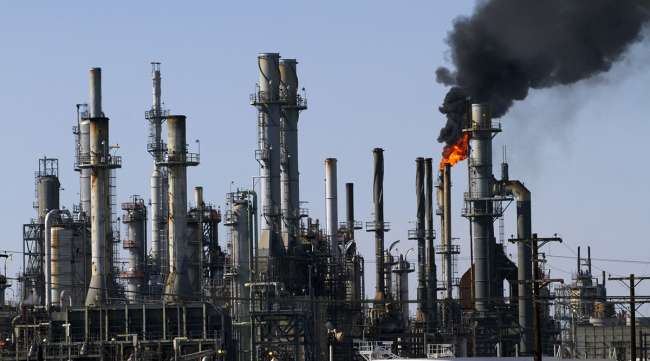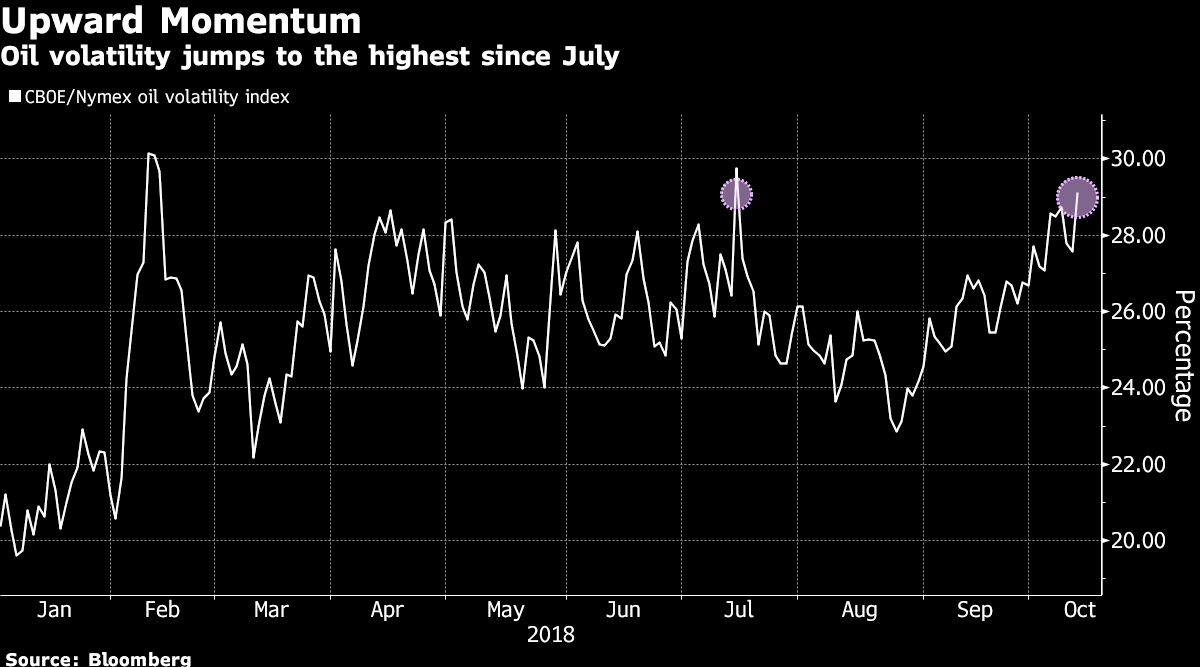Oil Falls Most in Eight Weeks as Investors Avoid Risky Assets

Crude posted the biggest decline in eight weeks as a risk-off sentiment spread through global markets.
Futures tumbled 3% in New York on Oct. 11. Investors eyed a sixth day of U.S. equity losses along with heightened volatility. Meanwhile, domestic crude stockpiles rose for a third straight week as refineries conducted seasonal maintenance, processing less oil, according to data from the Energy Information Administration.
“The enhanced volatility in the market in general is spilling over into energy, as investors are reducing risk,” said Rob Thummel, managing director at Tortoise, which manages $16 billion in energy-related assets. “When you have volatile equity markets, the risk-off trade is happening and you’ve got a third consecutive build, that’s generally not a good recipe for crude oil prices.”

OPEC cut its estimate for global demand for its crude next year due to weakening economic growth and higher output from rivals, such as U.S. shale drillers. OPEC’s outlook comes amid pressure on the cartel to pump more to offset any impact from Iranian sanctions and calls from President Donald Trump to boost output.
West Texas Intermediate for November delivery slid $2.20 to settle at $70.97 a barrel on the New York Mercantile Exchange, the lowest level in more than two weeks. Total volume traded was about 21% above the 100-day average.
A measure of oil market volatility climbed to the highest level since July earlier in the session.
Brent for December settlement fell $2.83 to end the session at $80.26 a barrel on the London-based ICE Futures Europe exchange. The global benchmark crude traded at a $9.45 premium to WTI for the same month.
Investors seeking to pinpoint the cause of the current rout in equities have no shortage of culprits: U.S companies are increasingly fretting the impact of the burgeoning trade war, while the same issue prompted the International Monetary Fund to dial down global growth expectations.
In the U.S., the EIA reported domestic commercial crude inventories rose 5.99 million barrels last week, while refinery utilization dropped to the lowest level since March. Stockpiles in the Strategic Petroleum Reserve fell by 1.31 million barrels. Analysts surveyed by Bloomberg had forecast a 2.8 million barrel rise in crude supplies.




